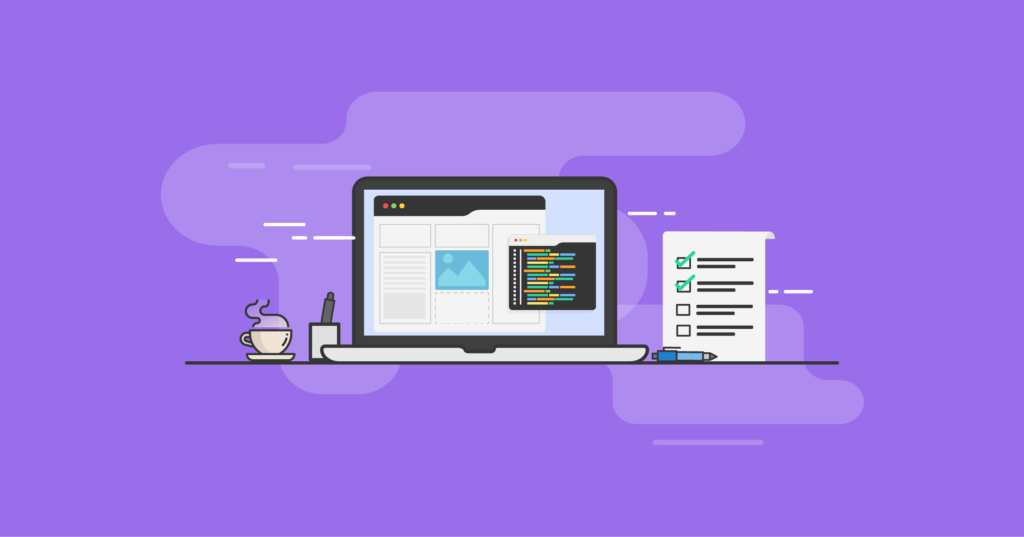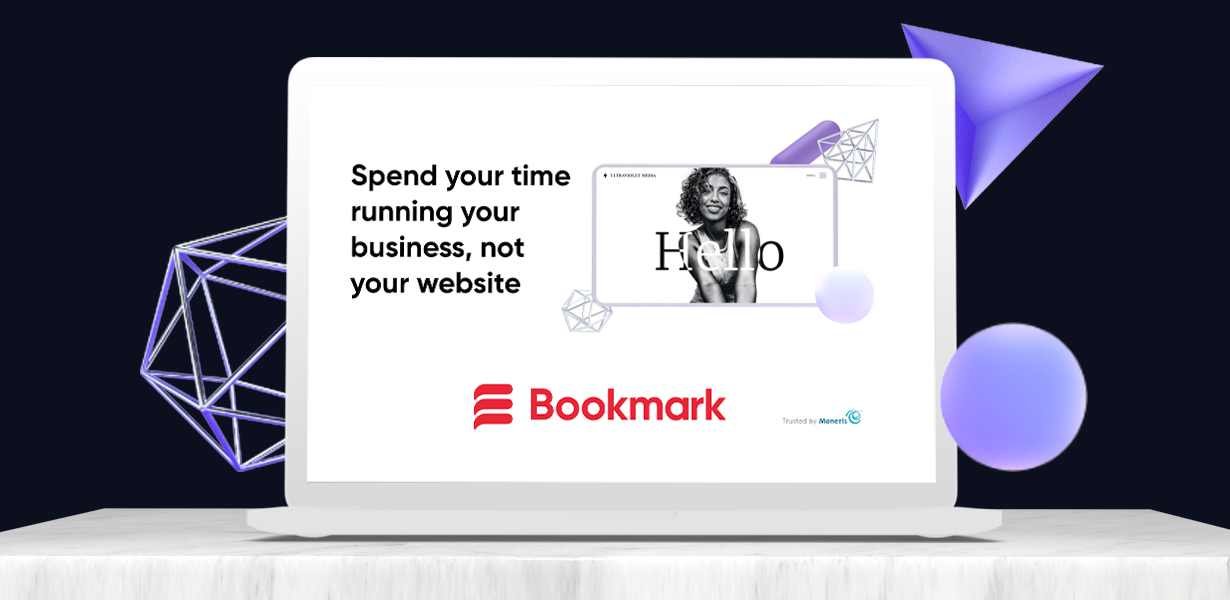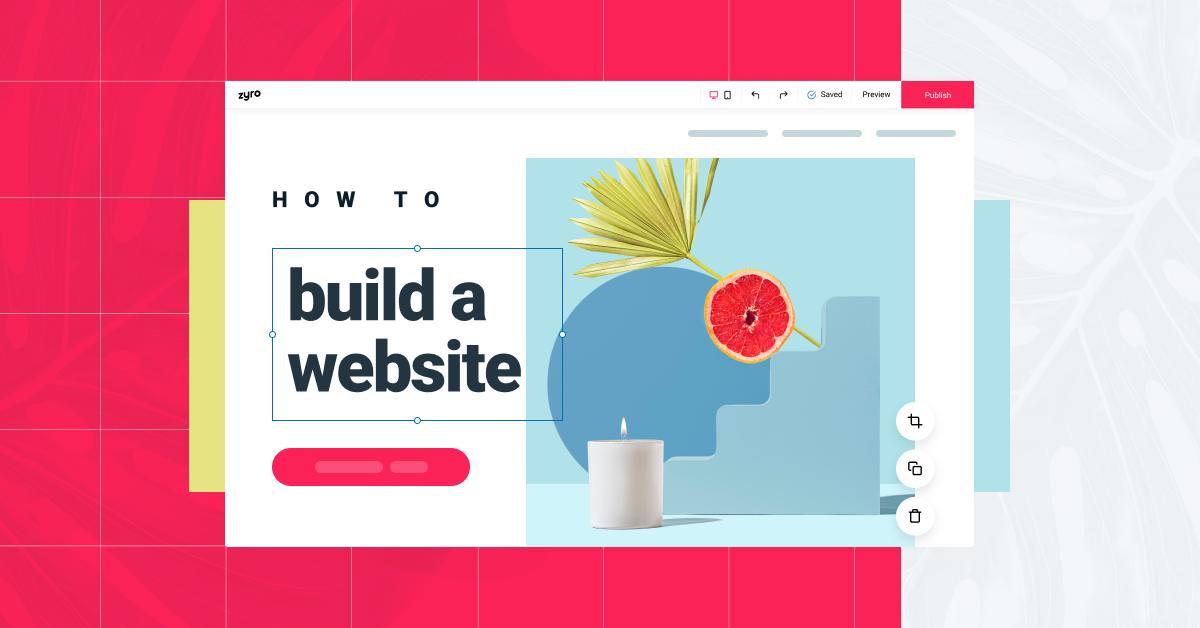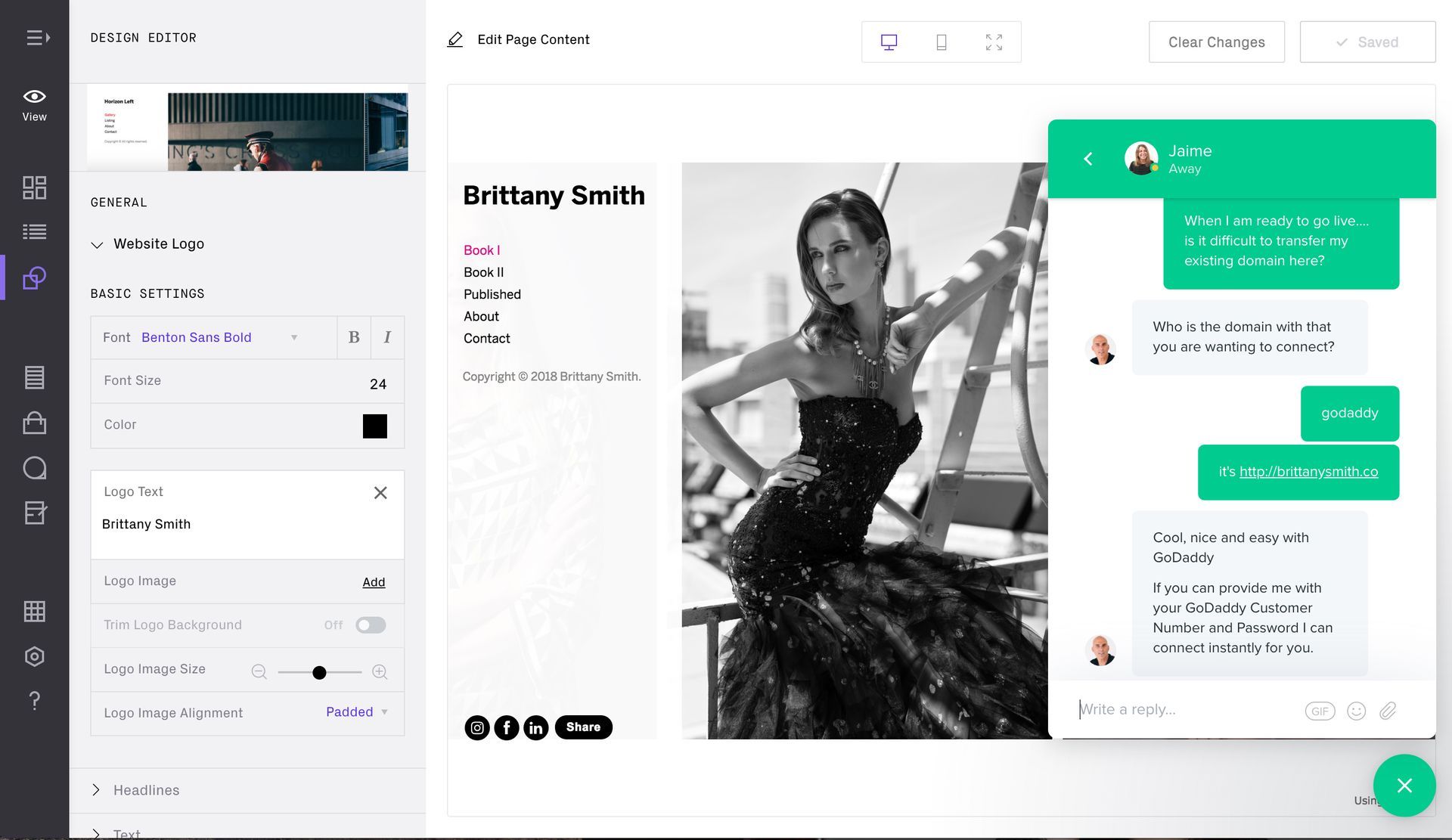8 Minute Read
Shopify
An In-Depth Review of the eCommerce Builder
I’ll start off by stating the obvious – as one of the major website builders on the market, Shopify does stand out due to its feature-rich e-commerce platform. However, there are some limitations for those seeking more advanced features or granular control over SEO.
With that being said, I’ll explore the various facets of Shopify, from its history and key features to pricing plans, user interface, and performance. I’ll also compare Shopify with other platforms to show you how they stack up
Let's dive in...

Table of Contents
- History and Background
- Key Features
- Pricing Plans
- Pros and Cons
- Customer Support
- Competitor Comparison
- Alternative Website Builders
- Conclusion
History and Background
So... if you didn't know this by now, I am a bit of a history buff. I like to learn about the origins and the journey of a company. To me, it is just interesting and in some cases the history of a company can be an indicator of the future of the company.
With that being said, Shopify's journey from a small e-commerce platform to a global industry leader is pretty interesting - being marked by key milestones, innovations, and strategic decisions. Understanding its history and background is important for comprehending the platform's evolution and the factors that have contributed to its success and may contribute to it's future growth.
Inception (2006)
Shopify was founded in 2006 by Tobias Lütke, Daniel Weinand, and Scott Lake. The platform originated from the founders' dissatisfaction with existing e-commerce solutions, prompting them to create a user-friendly and customizable platform for online merchants. The company's headquarters is in Ottawa, Canada.
Early Years and Growth
In its early years, Shopify focused on simplicity and ease of use, distinguishing itself from competitors. The platform gained traction rapidly, attracting small businesses and entrepreneurs looking for an accessible yet powerful e-commerce solution. During this period, Shopify's commitment to providing a seamless user experience laid the foundation for its future success.
Initial Funding and Expansion
Shopify secured its first significant round of funding in 2010, raising $7 million in a Series A round led by Bessemer Venture Partners. This injection of capital allowed the company to invest in product development, marketing, and infrastructure. As a result, Shopify expanded its reach, serving a broader range of merchants.
Going Public (2015)
A significant milestone in Shopify's history was its initial public offering (IPO) in 2015. The company went public on both the Toronto Stock Exchange (TSX) and the New York Stock Exchange (NYSE), raising over $130 million. This move not only provided Shopify with additional capital for expansion but also signaled its status as a major player in the e-commerce industry.
Continuous Innovation
Shopify's success can be attributed to its commitment to innovation. The platform continuously introduced new features and tools to meet the evolving needs of online businesses. This included improvements in customization options, the introduction of a mobile app, and the expansion of the App Store to offer a diverse range of integrations.
International Expansion
Recognizing the global nature of e-commerce, Shopify strategically expanded its presence beyond North America. The platform aimed to cater to merchants worldwide, adapting its services to different markets and currencies. This internationalization played a crucial role in Shopify's growth as a truly global e-commerce solution.
Shopify Plus (2014)
In 2014, Shopify introduced Shopify Plus, a specialized platform targeting high-volume merchants and enterprise-level businesses. Shopify Plus offered advanced features, scalability, and dedicated support, positioning itself as a solution for large and rapidly growing online stores.
Partnerships and Collaborations
Shopify's partnerships with major players in the tech and finance sectors further solidified its position in the industry. Collaborations with companies like Facebook, Google, and various payment processors enhanced the platform's capabilities and provided users with a comprehensive set of tools to grow their businesses.
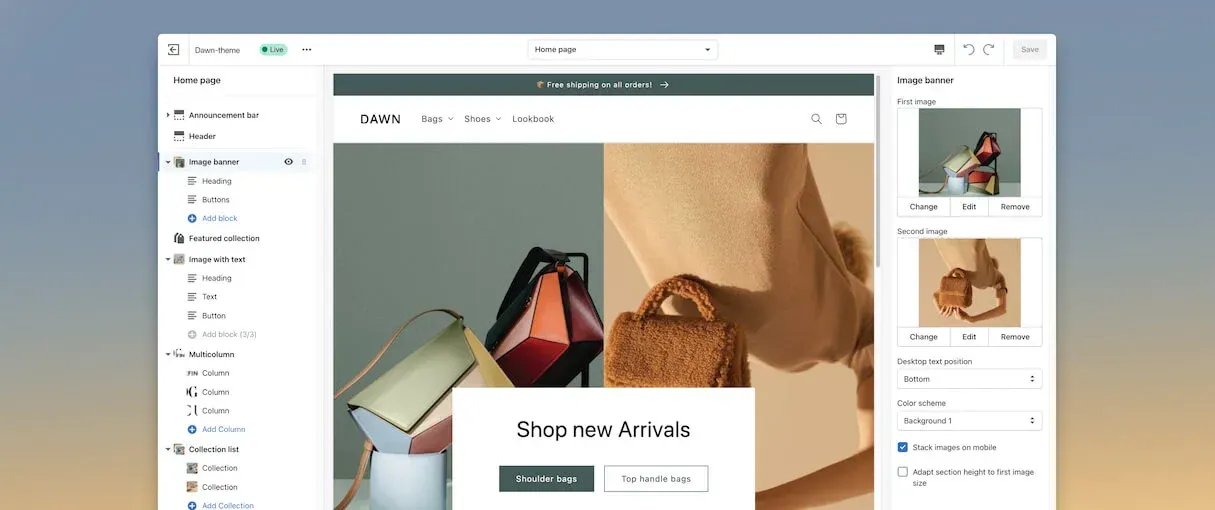
Key Features
E-commerce Platform
At the core of Shopify is its robust e-commerce platform, where you can sell stuff online. The platform is a pretty decent solution for those looking to sell products of even services online.
User Interface and Design
UI Design:
- Clean and Intuitive: Shopify's UI features a clean and intuitive design, allowing users to navigate seamlessly through various sections.
- Dashboard Overview: The dashboard provides a comprehensive overview of key metrics, sales, and order information.
- Centralized Menu: The centralized menu structure simplifies access to different functionalities, including products, orders, and analytics.
- Customization Options: Users can customize the appearance of their online store easily.
Usability:
- User-Friendly Navigation: The platform's navigation is user-friendly, making it easy for both beginners and experienced users to find and use features.
- Drag-and-Drop Editor: The drag-and-drop editor simplifies the customization of storefronts without requiring coding knowledge.
- Efficient Product Management: Adding, editing, and managing products is straightforward, streamlining inventory control.
App Store and Integrations
Access to a Wide Range of Apps:
- The Shopify App Store serves as a hub for a vast selection of apps, ranging from marketing and sales to inventory management and customer support.
- Merchants can explore and integrate apps that best align with their business needs, enhancing the overall functionality of their Shopify stores.
Seamless Integration:
- Apps available on the Shopify App Store are designed to seamlessly integrate with the Shopify platform, ensuring a smooth user experience.
- Easy installation and configuration processes minimize the technical barriers for merchants.
Varied Categories:
- Apps are categorized based on their functionalities, making it convenient for merchants to discover and navigate through solutions tailored to their specific requirements.
- Categories include Marketing, Sales, Social Media, Shipping, Inventory, and many more.
User Reviews and Ratings:
- Each app in the Shopify App Store features user reviews and ratings, providing valuable insights into the experiences of other merchants.
- Merchants can make informed decisions by considering the feedback and ratings before installing an app.
Free and Paid Apps:
- The App Store offers a mix of free and paid apps, giving merchants flexibility based on their budget and business priorities.
- Free trial options for some paid apps allow merchants to explore their features before committing to a subscription.
Payment Options
Key Features:
- Integrated Solution: Shopify Payments is fully integrated into the Shopify platform, eliminating the need for third-party gateways.
- Reduced Transaction Fees: Merchants using Shopify Payments may benefit from lower transaction fees compared to some external gateways.
- Seamless Checkout Experience: Customers can complete their purchases without being redirected to external payment pages, contributing to a smooth and professional checkout process.
- Fraud Analysis: The system includes built-in fraud analysis tools to help identify and prevent fraudulent transactions.
Supported Countries:
Shopify Payments is available in a growing number of countries, including the United States, Canada, the United Kingdom, Australia, and various European countries.
Supported Currencies:
Shopify Payments supports multiple currencies, allowing merchants to sell to customers around the world. The specific supported currencies depend on the country of operation.
Transaction Fees:
Transaction fees for Shopify Payments vary based on the Shopify plan:
- Basic Shopify: 2.9% + 30¢ per transaction
- Shopify: 2.6% + 30¢ per transaction
- Advanced Shopify: 2.4% + 30¢ per transaction
External Payment Gateways:
In addition to Shopify Payments, Shopify supports a wide range of external payment gateways, allowing merchants to choose the one that best aligns with their preferences and business needs.
Popular External Payment Gateways:
- PayPal
- Stripe
- Authorize.Net
- Square
- Amazon Pay
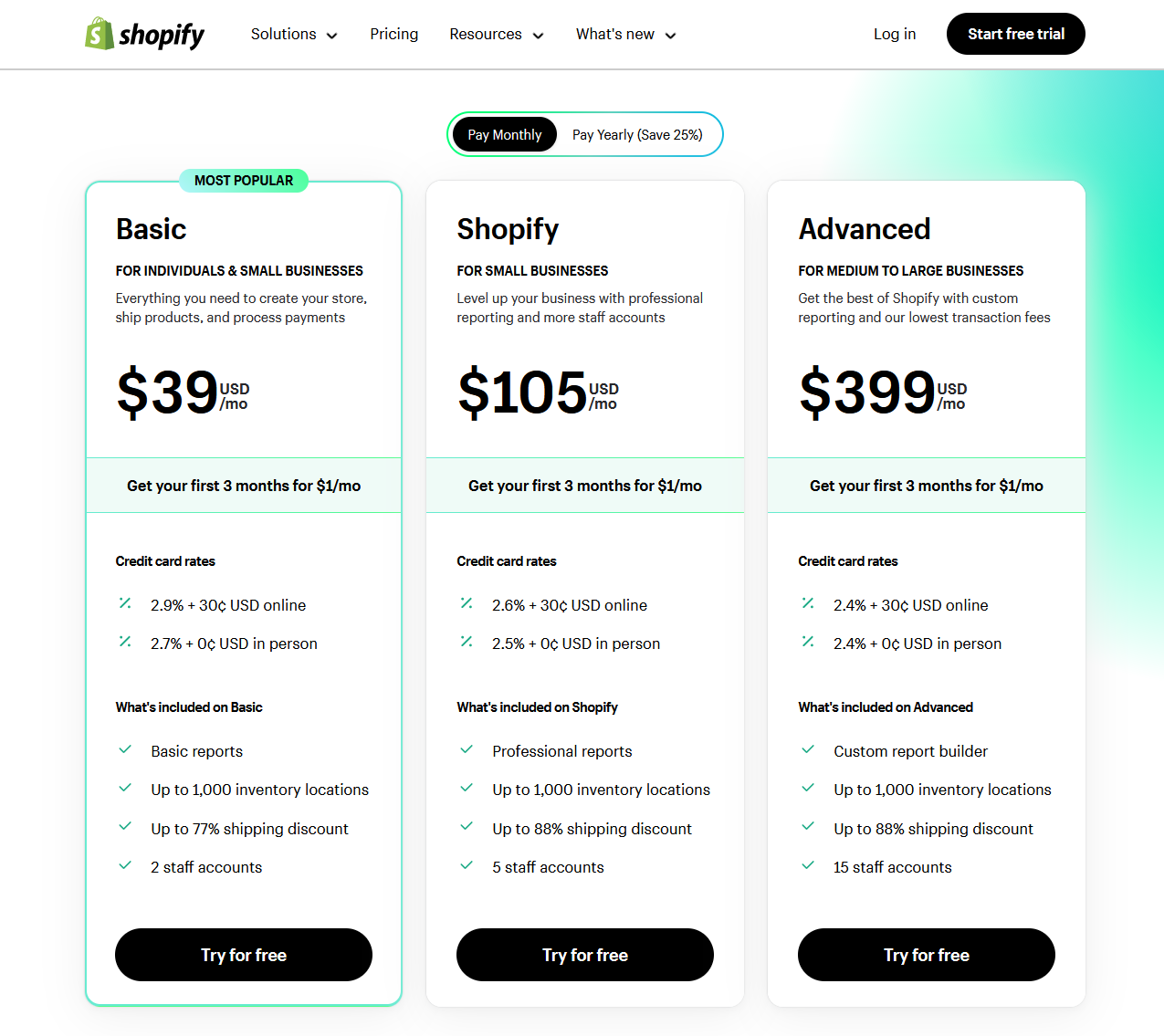
Pricing Plans
Shopify offers a range of pricing plans to accommodate businesses of varying sizes. This section will break down each plan, from Basic Shopify to Advanced.
Basic Shopify
Designed for small businesses and startups, Basic Shopify provides essential features to kickstart an online store.
Shopify
The standard Shopify plan caters to growing businesses, offering additional features compared to the basic plan.
Advanced Shopify
For businesses requiring advanced features and scalability, the Advanced Shopify plan may be the ideal choice.
Pros and Cons
Pros
User-Friendly Interface
One of Shopify's standout features is its intuitive and user-friendly interface. It's designed to cater to users with varying technical expertise, making it accessible for beginners while still providing robust features for experienced users.
Diverse and Customizable Themes
Shopify offers a wide array of professionally designed themes that cater to different industries. In my opinion, most of these themes are not only visually appealing but also customizable, allowing businesses to create a unique and branded online presence.
App Ecosystem
The Shopify App Store boasts a vast ecosystem of third-party applications and plugins. These apps cover various functionalities, from marketing and SEO to inventory management and customer support. The extensive app library enhances the platform's flexibility and scalability.
Seamless Integration with Third-Party Tools
Shopify integrates seamlessly with a range of third-party tools, including popular payment gateways, shipping carriers, and marketing platforms. This integration capability simplifies the process of managing different aspects of an online store and facilitates a cohesive business operation.
Mobile Responsiveness
In an era where mobile commerce is on the rise, Shopify ensures that online stores are mobile-responsive. This responsiveness not only improves the user experience for mobile shoppers but also positively impacts search engine rankings, as mobile-friendliness is a factor considered by search algorithms.
Robust Security Features
Security is a top priority for e-commerce businesses, and Shopify addresses this concern effectively. The platform provides SSL encryption, ensuring secure transactions. Additionally, it is Level 1 PCI DSS compliant, demonstrating a commitment to safeguarding customer data.
Reliable Hosting and Performance
Shopify provides hosting for its users, eliminating the need for external hosting services. The platform's infrastructure is designed to handle varying levels of traffic, ensuring a reliable and consistent performance even during peak times.
Multi-Channel Selling
Shopify enables businesses to sell not only through their online store but also through various marketing channels, including social media platforms and online marketplaces. This multi-channel selling approach helps businesses reach a wider audience and diversify their sales channels.
Excellent Customer Support
Shopify offers a range of customer support options, including 24/7 live chat, email support, and a dedicated help center. The responsive customer support contributes to a positive user experience and provides assistance when users encounter issues or need guidance.
Regular Updates and Improvements
Shopify consistently updates its platform, introducing new features and improvements. This commitment to ongoing development ensures that users benefit from the latest advancements in e-commerce technology.
Cons
Transaction Fees on Third-Party Payment Gateways
While Shopify provides its payment gateway (Shopify Payments), users who opt for third-party payment gateways may incur additional transaction fees. These fees can add up, impacting the overall cost for your businesses.
Customization Limits for Non-Developers
While Shopify offers a high level of customization, I think that users without coding knowledge might find certain design changes challenging to implement. This limitation can be a drawback for businesses with highly specific design requirements.
Ongoing Subscription Costs
Shopify operates on a subscription-based model, and while it offers various plans, businesses must budget for ongoing subscription costs. This can be a concern for small businesses or startups with limited financial resources.
SEO Customization Constraints
While Shopify provides basic SEO features, some users may find the level of customization limiting. In comparison to platforms that allow more granular control over SEO settings, Shopify's SEO capabilities might be considered less flexible by advanced users.
Limited Advanced Marketing Features in Basic Plans
Some advanced marketing features, such as advanced reporting and abandoned cart recovery, are only available in higher-tier plans. I believe that this may pose a challenge for smaller businesses that require these features but are operating on a tighter budget.
Platform Lock-In
While Shopify allows businesses to export their product data, transitioning to a different platform might still be challenging due to the proprietary nature of certain features and functionalities. This can create a sense of platform lock-in for some users.
Bandwidth Limits on Some Plans
Certain Shopify plans have bandwidth limits, and exceeding these limits can result in additional charges. This can be a concern for businesses with high levels of website traffic, as unexpected bandwidth charges may impact the budget.
Limited Blogging Capabilities
While Shopify includes a blogging feature, I know that some users will find its capabilities less robust compared to dedicated blogging platforms. Businesses with a strong emphasis on content marketing may find Shopify's blogging tools lacking in certain aspects.
Initial Learning Curve
For users new to e-commerce platforms, Shopify's features and settings may take some time to fully grasp. The initial learning curve might be steeper for individuals with limited technical or e-commerce experience.
Limited Product Variations in Lower-Tier Plans
The availability of product variations (e.g., size, color) is limited in lower-tier Shopify plans. Businesses with extensive product catalogs or those requiring a high degree of variation may need to opt for higher-tier plans to meet their specific needs.
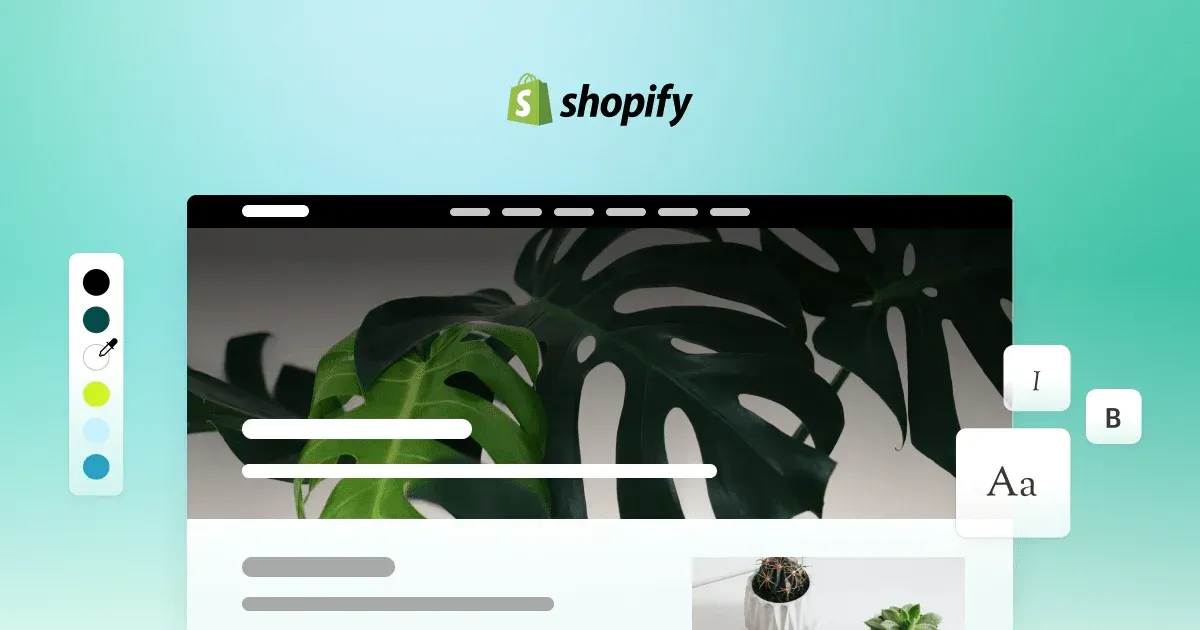
Customer Support
- 24/7 Availability: Shopify provides round-the-clock customer support, allowing users to seek assistance at any time.
- Live Chat: Users can engage in real-time conversations with support representatives through live chat.
- Email Support: Email support is available for users who prefer written communication.
- Phone Support: A phone support option is provided for more direct and immediate assistance.
- Help Center: Shopify's extensive Help Center serves as a knowledge hub, offering articles, guides, and FAQs.
- Community Forums: Users can participate in community forums to seek advice and share experiences.
Competitor Comparison
In this competitor comparison, I'm going to focus more on other popular website builders than other eCommerce platforms like Ecwid, Big Cartel, or Big Commerce due to the unique nature of Shopify's website builder.
Shopify:
- Hosting: Fully hosted, simplifying technical aspects for users.
- Ease of Use: User-friendly interface with a quick setup process.
- Scalability: Scales well for businesses of all sizes.
- App Ecosystem: Extensive App Store with a wide range of third-party apps.
- Payment Options: Offers Shopify Payments and supports various third-party gateways.
- Pricing: Subscription-based with different plans available.
Wix:
- Hosting: Wix is fully hosted, making it easy for users without technical expertise.
- Ease of Use: User-friendly drag-and-drop interface with a simple setup process.
- Scalability: Scales well for small to medium-sized businesses.
- App Ecosystem: Wix App Market with a variety of apps for different functionalities.
- Payment Options: Supports various payment gateways, offering flexibility.
- Pricing: Subscription-based, with different plans available.
Comparison Insight: Shopify and Wix are both user-friendly, fully hosted solutions, but Wix is often chosen by users who prioritize simplicity and a website builder approach.
Shopify vs. Squarespace
Shopify:
- Hosting: Fully hosted, reducing technical concerns for users.
- Ease of Use: User-friendly interface with a quick setup process.
- Scalability: Scales well for businesses of all sizes.
- App Ecosystem: Extensive App Store with a diverse range of third-party apps.
- Payment Options: Offers Shopify Payments and supports various third-party gateways.
- Pricing: Subscription-based with different plans available.
Squarespace:
- Hosting: Fully hosted, making it easy for users without technical expertise.
- Ease of Use: User-friendly drag-and-drop interface with a straightforward setup process.
- Scalability: Scales well for small to medium-sized businesses.
- App Ecosystem: Squarespace Extensions with a focus on design and functionality.
- Payment Options: Limited compared to Shopify but supports key payment gateways.
- Pricing: Subscription-based, with different plans available.
Comparison Insight: Both Shopify and Squarespace offer fully hosted solutions with user-friendly interfaces, but the choice may depend on specific design and functionality preferences.
Alternative Website Builders
If you are just looking for a website builder and you're not so interested in the eCommerce features that Shopify offers, you may want to explore other builders like:
Conclusion
In conclusion, choosing Shopify hinges on your specific business requirements, technical comfort level, and the level of customization and scalability needed for your online store.
The platform offers unique advantages, and the decision ultimately depends on your priorities, budget, and the long-term vision for your e-commerce venture.
Keep in mind that all website builders have limitations or drawbacks that you need to consider before making a decision. My advice to you is to talk to one of our awesome staff members and see if Shopify is the best fit for you.


